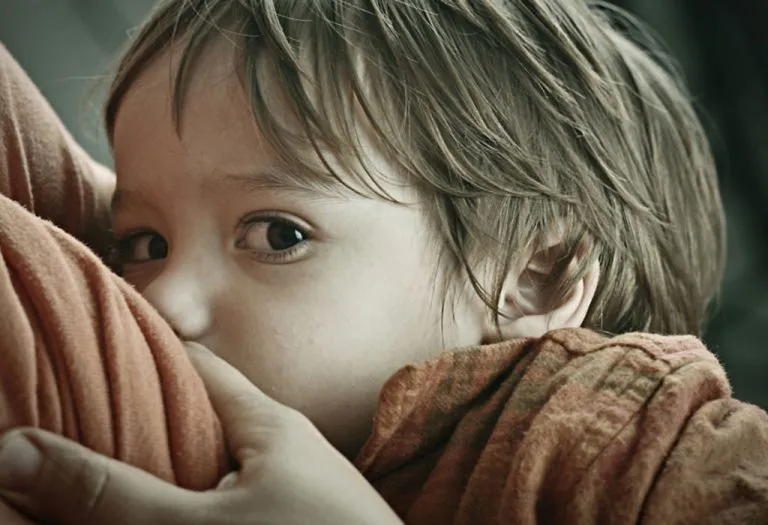Object Permanence: What It Is & When Do Babies Develop It

As adults, we understand that objects exist even if we cannot see or hear them, but babies do not perceive objects in a similar manner. For babies, whatever is not seen or heard ceases to exist in their world. However, it is an important developmental milestone for babies when they begin to understand and learn that even if they can’t see certain things, they are still there. This fascinating concept, known as object permanence, plays a crucial role in shaping a baby’s cognitive development and understanding of the environment around them. It lays the foundation for future learning and exploration.
What Is Object Permanence?
This is the object permanence definition. Object permanence is when your mind knows that even if you cannot see or hear something, it is there. When your baby is one month old, if you hide something from him or put it away, he thinks that it does not exist any longer. This is because his hearing and vision are still in a nascent stage. However, soon enough, i.e. around 4 to 7 months of age, your baby understands that even if something is out of his sight, it is still there.
Why Is Object Permanence an Important Milestone?
Object permanence is an important developmental milestone. Object permanence helps your baby to understand the world around him. He also learns to expect what may happen next. For instance, if you hide your baby’s toy under the blanket, he will look for it by lifting up the blanket. This gives your baby an idea that it is okay for things to disappear sometimes or that he can give up things because he can get them back later.
Lack of object permanence in the early months may frighten your baby. If you go into another room for some time, he may get frightened, thinking that you have disappeared, as he feels that what he can’t see, no longer exists. However, as your baby learns about object permanence, he also learns that people exist even if they leave. And thus, when you come and go, he will be fine with it.
When Does a Child Develop Object Permanence?
Here, we shall discuss the stages of object permanence, or what’s the object permanence age:
1. Birth to 1 Month: Reflexes
In the neonatal stage, your baby understands and explores the world around him through his reflexes. Your baby relies on his reflexes such as sucking, startling, or rooting, in order to interact with the world around him. However, at this age, your baby has no idea of object permanence, but he is exposed to visual stimuli, by which he may detect movements. This is an important milestone at this stage.
2. 1 to 4 Months: Primary Circular Reaction
Your baby may respond to familiar images, objects, or activities, though it may only be for a few seconds. Also, your baby may keep looking at or follow an object for some time. Around this age, your baby’s attention is more intentional than reflexive.
3. 4 to 8 Months: Secondary Circular Reaction
Around this age, a baby pays more heed to the world around him, and may perform actions to generate a response. During this stage, your baby starts understanding object permanence, and may look for partially hidden things, but not for completely hidden things. Your baby may take visual cues and comprehend some objects, but he is yet to understand more about object permanence.
4. 8 to 12 Months: Greater Sense of Exploration
Your baby is able to retrieve objects that you may hide from him. Though it may seem like a small task, it is a major cognitive development milestone. Your baby explores things and is more goal-oriented, which means his desire to look out for things is more intentional. However, your baby may find an object that you hide at a usual place, and not understand that he can find the object at a different place.
5. 12 to 18 Months: Tertiary Circular Reaction
Around this age, your baby may be able to find an object that is within his visual field. This means that he may only look for an object that you may hide within his visual field, and not beyond that. Your baby may do things to gain attention from others, which is a significant milestone for him.
6. 18 to 24 Months of Age: Emergence of Object Permanence
Around this age, your baby has a fair idea of what object permanence is. Your baby develops a mental representation of objects, which means that he may be able to find hidden objects, too. By this time, your baby will be able to imagine a thing that he cannot see, and thus he is able to understand object permanence.
How Piaget Measured Object Permanence in Infants?
Before the theory of object permanence was suggested, it was believed that cognitive development happens passively, or that it just happens. Jean Piaget, a psychologist, believed that cognitive development in babies and children is more vast and complex than it is understood to be. As per Piaget’s theory, babies do not just sit and wait for things to happen. Rather, they make constant efforts to understand new information, apply it to their existing concepts, and create their own representation of various objects around them. In simple words, babies understand and perceive various things around them by making use of their motor skills such as vision, touch, movement, and taste.
At first, babies have no clue of the world around them, and they believe and understand only what they can see. Therefore, mental representation of various objects becomes very important in order to understand that objects continue to exist even when the eyes cannot see them.
Jean Piaget calls these mental representations ‘schemas’, which means knowledge of things in the world. For instance, a baby may have a schema for breast milk or bottle. As your baby grows, his schemas multiply and may become more and more complex. However, by the process of accommodating and assimilating, children tend to develop various new categories by increasing their already existing categories, and may change their current schemas.
Object Permanence Games
Babies learn quickly through fun and playful ways, and therefore as parents, you do not have to think too far about teaching your baby object permanence. The best way to help your baby learn any skill is by spending some quality time with him. There are many object permanence examples. It is only through interaction and experiences with parents and loved ones that your baby can master various skills and enhance his learning.
You may buy object permanence toys or play the following games with your baby:
1. Play, Leave, and Return
This a good game that you can play with your little one. You can simply leave the room, keep your baby with your partner or a caretaker, and return in a while. It is a great way of teaching your baby that even though he cannot see you, you are still there. Also, object permanence is not just about visual perception. You can even call out for your baby from the other room to let him that you are there, even if you are not visible.
2. Play Peek-a-Boo
Peek-a-boo is one of the best games to play, to give a hang of object permanence to your baby. You may play this game with your baby if he is between 6 to 12 months of age, as by this age, he is getting the idea of object permanence. You may hide behind a curtain or a door, show your face to your baby, and then hide again. Your baby may be able to understand that though you are not seen, you are still there, hiding behind the curtain.
3. Hide Your Baby’s Favorite Toy
You can take your baby’s favorite toy, and hide it under the blanket for a while, and then take it out. You can also leave a small part of it visible, so that your baby can find it on his own. You can make this game more interesting and challenging as your baby grows by hiding most of the toy and making a smaller part visible. Alternatively, you can take the toy and hide it behind you, and then bring it in front of your baby.
4. The Cup-and-Ball Game
Place a small ball or toy under one of three plastic cups while your baby watches. Then, shuffle the cups and ask your baby to find the ball. In the beginning, keep the shuffling slow and easy, and gradually increase the difficulty level as your baby gets better at understanding object permanence.
5. Moving Object Hide-and-Seek
Take a small toy and hide it in one of your hands while your baby is watching. Slowly move your hands behind your back, then bring both hands forward and ask your baby to guess which hand holds the toy. Open the other hand first to build suspense, then reveal the toy. This game keeps your baby engaged while reinforcing the idea that hidden objects don’t disappear.
These games are a fun way to make sure that your baby understands object permanence. However, not all babies are alike. While some babies may enjoy playing such games, others may panic at the sheer thought of your disappearance. It is recommended that you handle the situation accordingly. If your baby is not reacting well to these games, skip playing them for some time.
Signs Your Baby Is Developing Object Permanence
Object permanence is an essential developmental milestone that shows your baby is beginning to understand that objects and people continue to exist even when they can’t be seen. Here are some signs that your baby is developing this fascinating concept:
- Your baby enjoys playing peek-a-boo and starts laughing or looking for you when you hide.
- If you hide your baby’s toy under a blanket or pillow, they actively look for it instead of forgetting about it.
- Your baby turns their head or body toward a familiar voice or sound, even when it’s coming from another room.
- Separation anxiety may emerge as your baby realizes you exist even when they can’t see you.
- Your baby closely watches a toy or object as it moves out of their field of vision.
- They try to grab or uncover objects that you have partially or fully hidden from view.
- Your baby smiles or reacts when seeing pictures of familiar people, even if those people aren’t currently present.
- Your baby begins to expect certain outcomes, such as you reappearing from behind a door or curtain.
- Your baby attempts to look behind furniture, curtains, or other obstacles to see what’s hidden.
What Developments Occur After Object Permanence?
Once your baby develops object permanence, it marks the beginning of a series of exciting cognitive milestones. Here are some developments that typically follow:
- Increased Memory and Recall: Your baby begins to remember familiar people, places, and objects, even when they aren’t around. They start recalling experiences and showing recognition.
- Exploration and Curiosity: With a stronger understanding of permanence, babies become more curious about their environment, exploring hidden or out-of-reach objects and engaging in problem-solving activities.
- Cause-and-effect Understanding: As babies start to realize that their actions can influence the world around them, they begin to explore cause-and-effect relationships (e.g., pressing buttons on toys to make sounds).
- Improved Social Awareness: Babies start to recognize that people exist outside of their immediate surroundings, which leads to stronger attachment to familiar caregivers and social behaviors.
- Symbolic Play: Once they understand that things exist beyond sight, babies begin to engage in imaginative play, such as pretending objects are something else or using toys symbolically (e.g., pretending a block is a phone).
- Better Anticipation: Babies develop the ability to anticipate events, such as knowing a game of peek-a-boo is about to happen or expecting you to return after a brief separation.
- Language Development: As babies become more aware of their surroundings and people, they begin associating words with objects, leading to an increase in vocabulary and comprehension.
- Separation Anxiety: A natural result of understanding object permanence is that babies may experience more distress when separated from caregivers, as they understand the concept of absence and presence more fully.
FAQs
1. Can babies with delayed development understand object permanence?
Yes, babies with delayed development can still achieve object permanence, though the timeline might be different. It’s important to monitor their progress and consult a pediatrician if there are concerns about cognitive milestones. Early interventions can support their learning process.
2. Does object permanence affect a baby’s attachment to caregivers?
Yes, the development of object permanence is linked to a baby’s attachment to caregivers. As babies understand that their caregivers still exist even when not in sight, they may experience stronger bonds and potentially more separation anxiety. This is a healthy part of emotional development.
If you want to know how well your child understands object permanence or for any other query about his cognitive development, consult your paediatrician.
References/Resources:
1. Moore. M, Meltzoff. A; New findings on object permanence: A developmental difference between two types of occlusion (British Journal of Developmental Psychology); National Library of Medicine; https://pmc.ncbi.nlm.nih.gov/articles/PMC4215949/; November 1999
2. Baillargeon. R, DeVos. J; Object permanence in young infants: further evidence (Child Development); National Library of Medicine; https://pubmed.ncbi.nlm.nih.gov/1786712/; December 1991
3. Separation Anxiety; Stanford Medicine; https://www.stanfordchildrens.org/en/topic/default?id=separation-anxiety-90-P02283
4. Cognitive Development in Infants: 4 to 7 Months; American Academy of Pediatrics; https://www.healthychildren.org/English/ages-stages/baby/Pages/Cognitive-Development-4-to-7-Months.aspx
5. CDC’s Developmental Milestones; CDC; https://www.cdc.gov/ncbddd/actearly/milestones/index.html
6. An. M, Marcinowski. E, Hsu. L, Stankus. J, et al.; Object Permanence and the Relationship to Sitting Development in Infants With Motor Delays; Pediatrics Physical Therapy; https://journals.lww.com/pedpt/fulltext/2022/07000/object_permanence_and_the_relationship_to_sitting.7.aspx; July 2022
7. Wood. K, Smith. H, Grossniklaus. D; Piaget’s Stages of Cognitive Development; Department of Educational Psychology and Instructional Technology, University of Georgia; https://resources.saylor.org/wwwresources/archived/site/wp-content/uploads/2011/07/psych406-5.3.2.pdf
Also Read:
Toddler Hold Objects Close to Face
Toddler Relating Real Life Objects
Toddler Shifting Objects In and Out
Was This Article Helpful?
Parenting is a huge responsibility, for you as a caregiver, but also for us as a parenting content platform. We understand that and take our responsibility of creating credible content seriously. FirstCry Parenting articles are written and published only after extensive research using factually sound references to deliver quality content that is accurate, validated by experts, and completely reliable. To understand how we go about creating content that is credible, read our editorial policy here.

























